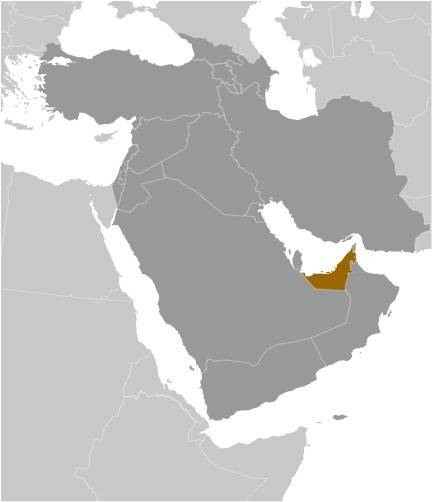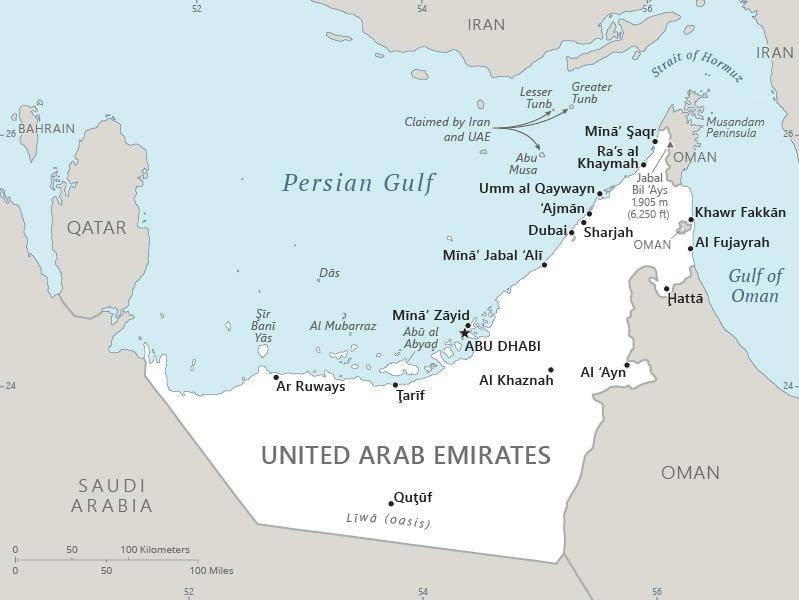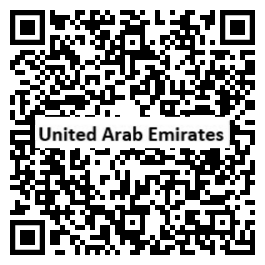Country Summary




Introduction
Background
The Trucial States of the Persian Gulf coast granted the UK control of their defense and foreign affairs in 19th century treaties. In 1971, six of these states - Abu Dhabi, 'Ajman, Al Fujayrah, Ash Shariqah, Dubayy, and Umm al Qaywayn - merged to form the United Arab Emirates (UAE). They were joined in 1972 by Ra's al Khaymah.
Geography
Area
total: 83,600 sq km
land: 83,600 sq km
water: 0 sq km
Climate
desert; cooler in eastern mountains
Natural resources
petroleum, natural gas
People and Society
Population
9,915,803 (2022 est.)
Ethnic groups
Emirati 11.6%, South Asian 59.4% (includes Indian 38.2%, Bangladeshi 9.5%, Pakistani 9.4%, other 2.3%), Egyptian 10.2%, Filipino 6.1%, other 12.8% (2015 est.)
Languages
Arabic (official), English, Hindi, Malayam, Urdu, Pashto, Tagalog, Persian
Religions
Muslim (official) 76%, Christian 9%, other (primarily Hindu and Buddhist, less than 5% of the population consists of Parsi, Baha'i, Druze, Sikh, Ahmadi, Ismaili, Dawoodi Bohra Muslim, and Jewish) 15% (2005 est.)
Population growth rate
0.58% (2022 est.)
Government
Government type
federation of monarchies
Capital
name: Abu Dhabi
Executive branch
chief of state: President MUHAMMAD bin Zayid Al-Nuhayan (since 14 May 2022); Vice President MUHAMMAD bin Rashid Al-Maktoum (since 5 January 2006); note - MUHAMMAD bin Zayid Al-Nuhayan elected president by the Federal Supreme Council following the death of President KHALIFA bin Zayid Al-Nuhayan on 13 May 2022
head of government: Prime Minister and Vice President MUHAMMAD bin Rashid Al-Maktoum (since 5 January 2006); Deputy Prime Ministers SAIF bin Zayid Al-Nuhayan, MANSUR bin Zayid Al-Nuhayan (both since 11 May 2009), and MAKTOUM bin Mohammed Al-Maktoum (since 25 September 2021)
Legislative branch
description: unicameral Federal National Council (FNC) or Majlis al-Ittihad al-Watani (40 seats; 20 members indirectly elected using single non-transferable vote by an electoral college whose members are selected by each emirate ruler proportional to its FNC membership, and 20 members appointed by the rulers of the 7 constituent states; members serve 4-year terms)
Economy
Economic overview
historically oil-driven Middle Eastern economy; diversifying into a trade-oriented logistics and supply chain leader; weak domestic business growth; declining real estate sector; new Israeli technology trade improving resilience; key aid donor
Real GDP (purchasing power parity)
$655.79 billion (2019 est.)
Real GDP per capita
$67,100 (2019 est.)
Agricultural products
dates, cucumbers, tomatoes, goat meat, eggs, milk, poultry, carrots/turnips, goat milk, sheep milk
Industries
petroleum and petrochemicals; fishing, aluminum, cement, fertilizer, commercial ship repair, construction materials, handicrafts, textiles
Exports
$308.5 billion (2017 est.)
Exports - partners
India 11%, Japan 10%, Saudi Arabia 7%, Switzerland 6%, China 6%, Iraq 6% (2019)
Exports - commodities
crude petroleum, refined petroleum, gold, jewelry, broadcasting equipment (2019)
Imports
$229.2 billion (2017 est.)
Imports - partners
China 15%, India 12%, Untied States 7% (2019)
Imports - commodities
gold, broadcasting equipment, jewelry, refined petroleum, diamonds (2019)
Exchange rates
Emirati dirhams (AED) per US dollar -
Page last updated: Wednesday, September 28, 2022
